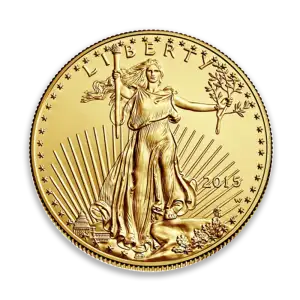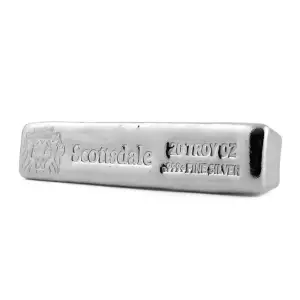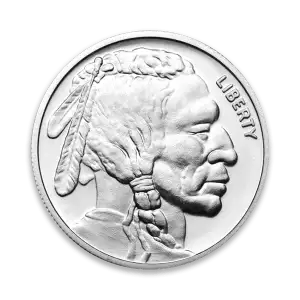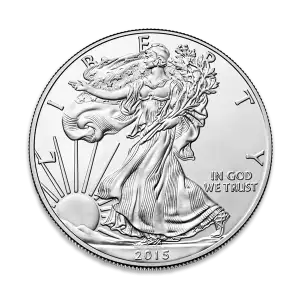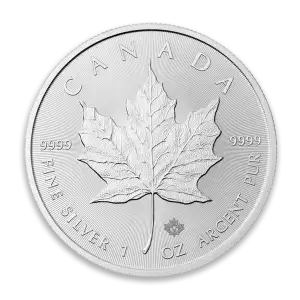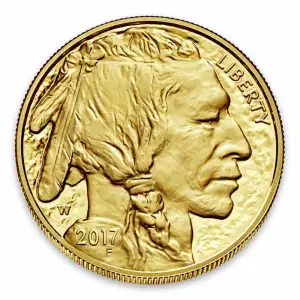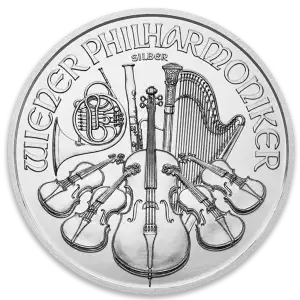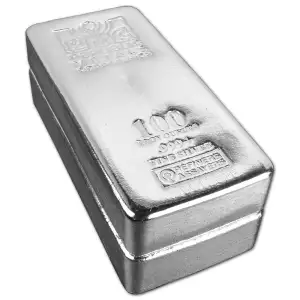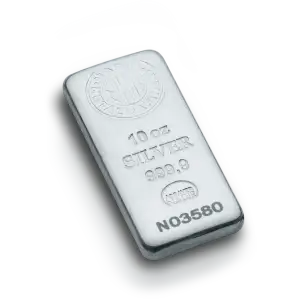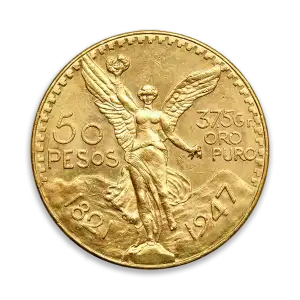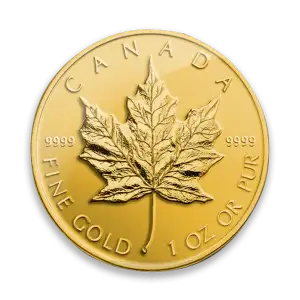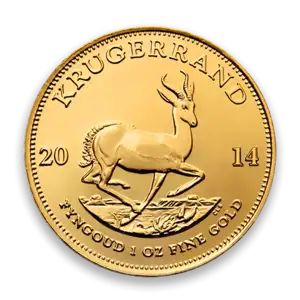Tips and Techniques
Collecting coins is more than a hobby - it’s an investment in history and precious metals. But as the popularity of numismatics grows across Arizona, especially in areas like Phoenix and Peoria, so does the risk of encountering counterfeit coins. Serious collectors should consider purchasing from reputable dealers and utilizing professional grading services to ensure the coin's authenticity.
Whether you’re a seasoned collector or just starting out, knowing how to identify fake coins is critical to protecting your collection. Since the first coin was created nearly 3,000 years ago, ensuring the authenticity of coins has been a crucial aspect of numismatics. In this guide, we’ll walk you through essential tips for spotting counterfeit coins, including valuable spotting counterfeit coins tips, how to check gold at home, and where to go for expert verification in the Valley.

Counterfeit Currency
Counterfeit currency, including fake cast coins, has been a persistent issue throughout history, with counterfeiters continually evolving their methods to deceive collectors and investors. The production and distribution of counterfeit coins can have significant financial and emotional consequences for those who unknowingly purchase them. Understanding the risks associated with counterfeit coins is essential for collectors, investors, and anyone interested in numismatics.
Counterfeiters aim to earn money by producing fake coins, often motivated by the potential profit from replicating authentic currencies.
Counterfeit coins can be made from a variety of materials, including base metals, and can be designed to mimic the appearance of genuine coins. The use of advanced technology has made it easier for counterfeiters to produce high-quality fake coins that can be difficult to distinguish from authentic ones. However, there are several techniques and methods that can be used to detect counterfeit coins, including visual inspection, weight and dimension checks, and magnetic tests.
It is crucial for collectors and investors to be aware of the risks associated with counterfeit coins and to take steps to verify authentic coins' authenticity before making a purchase. By being informed and vigilant, individuals can protect themselves from the financial and emotional consequences of purchasing counterfeit coins.
Why Fake Coins Are on the Rise
In recent years, there has been a surge in counterfeit coins - especially those mimicking high-value pieces like:
- American Gold Eagles
- Morgan Silver Dollars
- Pre-1933 U.S. gold coins
- Ancient and world coins
Advanced techniques can be used to make new coins appear old, making it important for collectors to understand these methods to protect themselves from fraud. Examining a coin's design for irregularities, such as blurry details or incorrect fonts, is crucial in identifying counterfeits.
Many fakes are produced overseas and sold through online marketplaces, making it harder for collectors to spot the difference without the right tools or expertise. It is crucial to verify a coin’s authenticity through various methods and strategies, such as sound tests, using reputable dealers, and consulting expert opinions.
Understanding Counterfeit Coin Risks
Counterfeit coins pose a significant risk to collectors, investors, and the numismatic community as a whole. The financial losses resulting from the purchase of counterfeit coins can be substantial, and the emotional distress caused by discovering a fake coin can be significant. Counterfeit coins can also damage the reputation of reputable dealers and the trust between buyers and sellers in the numismatic market.
It is essential to understand the methods used by counterfeiters to produce fake coins, including the use of silver and gold base metals, casting, and striking. By being aware of these methods, collectors and investors can better identify potential counterfeit coins and take steps to verify their authenticity. The risks associated with counterfeit coins can be mitigated by purchasing from reputable dealers, using third-party grading services, and seeking expert opinions.
Additionally, collectors and investors should be cautious when purchasing coins online or from unknown sellers, as these transactions can be high-risk. By taking a proactive and informed approach, including using a magnifying glass dividuals can minimize their exposure to counterfeit coins and protect their money and investments.
Types of Fake Coins
There are several types of fake coins, including struck counterfeit coins, cast fake coins, and electrotypes. Struck counterfeit coins are made using a die and can be difficult to distinguish from genuine coins. Cast fake coins are made by pouring molten metal into a mold and can often be identified by their rough surface and lack of fine details. Fake cast coins are created using a mold made from genuine coins, allowing counterfeiters to replicate the appearance of real coins without damaging the originals, which can mislead collectors. Electrotypes are made using an electroplating process and can be highly detailed, but often lack the weight and feel of genuine coins.
Each type of fake coin has its own unique characteristics, and being able to identify these characteristics is essential for detecting counterfeit coins. Counterfeiters often use a combination of methods to produce fake coins, making them more difficult to detect. The use of advanced technology, such as 3D printing and computer-aided design, has made it easier for counterfeiters to produce high-quality fake coins. By understanding the different types of fake coins and their characteristics, collectors and investors can better protect themselves from counterfeit coins.
Characteristics of Counterfeit Coins
Counterfeit coins often have distinct characteristics that can be used to identify them, including uneven weight, incorrect metal composition, and poor craftsmanship. The surface of a counterfeit coin may be rough or lack the fine details found on genuine coins. The edges of a counterfeit coin may be irregular or show signs of casting or striking. The metal composition of a counterfeit coin may be incorrect, or the coin may be made from a base metal coated with a thin layer of precious metal.
Examining a coin's surface can reveal critical imperfections such as bubbles, pits, or seams that indicate a counterfeit, as opposed to the smooth and even finish of genuine coins. Counterfeit coins may also lack the patina or wear that is typically found on genuine coins. By examining coins closely, collectors and investors can identify these characteristics and determine whether a coin is genuine or counterfeit. The use of a magnifying glass, weighing scales, and other tools can aid in the detection of counterfeit coins. It is essential to be thorough and meticulous when examining coins, as counterfeiters often try to mimic the appearance of genuine coins.
Verification Methods
Verifying the authenticity of a coin is crucial for collectors and investors to ensure they are purchasing a genuine item. One of the most effective ways to verify a coin’s authenticity is to examine it closely using a magnifying glass. This allows you to spot fine details and imperfections that may indicate a counterfeit.
Coin dealers and experts use various methods to detect counterfeit coins, including the magnet test, sound test, and weight check. The magnet test is particularly useful for detecting fake coins made from magnetic metals, while the sound test can reveal the distinct ringing sound of genuine gold and silver coins. Weighing the coin and comparing it to known standards can also help identify discrepancies.
The metal composition of a coin can be analyzed using techniques such as X-ray fluorescence (XRF) to determine its authenticity. This non-destructive method provides a detailed analysis of the coin’s metal content, helping to confirm whether it is made from genuine precious metals.
Pouring molten metal into a mold can create air bubbles, which can be visible on the coin’s surface, indicating it is a cast fake. Serious collectors should work with reputable dealers to ensure they are purchasing real coins and not counterfeits. Counterfeiters often deceive collectors by creating fake coins that resemble rare and valuable coins, making it essential to use multiple verification methods.
Non-magnetic metals, such as gold and silver, can be used to create counterfeit coins that are difficult to detect. However, by combining visual inspection, weight checks, and advanced testing methods, collectors can increase their chances of identifying counterfeit coins and protecting their investments.
7 Proven Tips to Spot Counterfeit Coins
1. Check the Weight and Size
Authentic coins have precise specifications for weight and dimensions. Measure these using a digital scale and caliper to compare:
- Weight (in grams)
- Diameter and thickness
Even small discrepancies from these precise specifications can indicate a fake.
2. Look Closely at Details
Use a magnifying loupe or microscope to examine:
- Edge lettering
- Font style and sharpness
- Relief and design details
Missing details, such as irregularities in designs or incomplete engravings, can serve as critical indicators of authenticity.
Compare your coin to certified images from NGC or PCGS.
Recognizing subtle differences in coins during visual inspections is crucial. These minor details can be pivotal in distinguishing authentic coins from counterfeits.
3. Try the Magnet Test
Gold and silver are non-magnetic.
Steel, along with iron and copper, can be identified through magnetic properties, making it a common metal used for imitation coins.
How to do it: Use a neodymium magnet. If the coin sticks, it’s definitely a fake.
4. Listen to the Ping (Sound) Test
Genuine silver and gold coins make a distinct, bell-like ringing sound when gently tapped. Striking a genuine coin against a hard surface produces a distinct sound, which can help determine authenticity.
- Try tapping with another coin or use a smartphone app that measures frequency.
- Fake coins often produce a dull, short “thud.”
5. Check for Surface Bubbles or Seams
Some counterfeits are cast rather than struck. Air bubbles can be a common flaw found in cast counterfeit coins, caused by air being trapped during the casting process. Watch for:
- Tiny bubbles
- Visible seams along the edges
- Rough or grainy surfaces
The casting process can lead to noticeable imperfections, such as bubbles or seams, indicating lower manufacturing quality.
6. Use an Electronic Gold Tester
For higher-value items, consider:
- Sigma Metalytics testers
- XRF analyzers
- Portable density meters
These tools can give a quick, non-destructive reading of metal content. XRF analyzers can also verify the authenticity of genuine gold and silver coins, providing reliable, non-destructive results.
7. When in Doubt, Get Professional Grading
Certified grading from NGC or PCGS includes authentication. Purchasing coins from reputable coin dealers is essential to ensure authenticity and mitigate the risk of buying counterfeit coins. Coins in tamper-evident slabs with serial numbers are your safest bet.
Examining a coin's surface with high-resolution digital magnification can reveal details and inconsistencies crucial for identifying counterfeits.
8. The Role of Ice Cube in Detecting Counterfeits
The ice cube test is a simple and effective method for detecting counterfeit coins, particularly those made from base metals. The test involves placing an ice cube on the surface of the coin and observing how quickly it melts. Genuine coins made from precious metals, such as gold and silver, will cause the ice cube to melt more quickly due to their high thermal conductivity. Counterfeit coins made from base metals will not conduct heat as well, and the ice cube will melt more slowly.
This test can be used in conjunction with other methods, such as visual inspection and weight checks, to verify the authenticity of a coin. The ice cube test is a non-destructive method, meaning it will not damage the coin, and can be performed quickly and easily. While the ice cube test is not foolproof, it can provide valuable insights into the metal composition of a coin and help detect counterfeit coins. By using the ice cube test and other methods, collectors and investors can increase their confidence in the authenticity of their coins and protect themselves from counterfeit coins.
Tools to Check Coins at Home
Before rushing to a dealer, here are some tools every collector in Phoenix or Peoria should keep handy:
- Precision digital scale
- Calipers (mm/inch)
- 10x jeweler’s loupe
- Neodymium magnet
- Coin ping tester (or smartphone app)
- Reference book or online coin image database
Accurately measuring the weights and dimensions of coins is crucial for detecting counterfeits. Genuine coins have specific weights and dimensions, and any discrepancies can indicate a fake.
Working with Coin Dealers
Working with reputable coin dealers is essential for collectors to ensure they are purchasing authentic coins. Coin dealers can provide valuable insights into the coin’s history, especially in terms of rare coins rarity, and value, helping collectors make informed decisions.
Reputable dealers can help collectors spot counterfeit coins by examining the coin’s design, metal composition, and weight. Their expertise and experience allow them to identify subtle differences that may indicate a fake. Additionally, dealers can provide guidance on how to care for and store coins to maintain their condition and value.
Collectors should research and find reputable dealers who are members of professional organizations, such as the Professional Coin Grading Service (PCGS) or the Numismatic Guaranty Corporation (NGC). These organizations set high standards for their members, ensuring that collectors receive reliable and trustworthy service.
Dealers can help collectors understand the coin’s market value and provide advice on buying and selling coins. Building a relationship with a reputable dealer can help collectors gain access to rare and high-value coins, enhancing their collections.
Dealers can also provide education and resources on coin collecting, including information on counterfeit detection and prevention. By working with knowledgeable and reputable dealers, especially those dealing in silver coins collectors can protect themselves from counterfeit coins and make the most of their numismatic investments.
Struck vs. Cast Counterfeit Coins
Struck counterfeit coins are created using a die and are often more difficult to detect than cast fakes. These coins can closely resemble genuine coins, making them a significant challenge for collectors. Struck counterfeits can be made to resemble rare and valuable coins, increasing the risk of deception.
Cast counterfeit coins, on the other hand, are made by pouring molten metal into a mold. This process can create air bubbles or other imperfections on the coin’s surface, making them easier to identify. Cast fakes often have a rougher texture and lack the fine details found on genuine coins.
The sound test can be used to detect cast fakes, as they tend to sound dull when struck against a hard surface. Genuine coins, especially those made from precious metals, produce a clear and ringing sound. Struck counterfeits, however, can produce a similar clear sound, making them more difficult to detect through this method alone.
The weight and metal composition of a coin can also be used to determine its authenticity. Genuine coins have precise specifications for weight and metal content, and any deviations can indicate a counterfeit. By using tools such as digital scales and XRF analyzers, collectors can verify these specifications and identify potential fakes.
Collectors should be aware of the differences between struck and cast counterfeit coins to make informed purchasing decisions and avoid falling victim to counterfeiting. By understanding the characteristics of each type and using a combination of detection methods, collectors can protect their investments and ensure the authenticity of their coins.
Local Tip: Where to Authenticate Coins in Phoenix & Peoria
The desert Southwest has a vibrant coin-collecting scene, but local collectors face unique challenges from traveling sellers or pop-up flea market booths.
Avoid unnecessary risks. Visit a reputable coin dealer like Copper State Coin & Bullion - trusted across Phoenix and Peoria - for:
- On-site coin authentication
- PCGS/NGC submission services
- Appraisals and consultations
- Buying certified gold, silver, and rare coins
Additionally, it is important to report any counterfeit coins to your local police station to help address the issue of counterfeiting.
How to Avoid Buying Fake Coins
Preventing the purchase of counterfeit coins is often easier than trying to authenticate them later.
One of the most effective ways to ensure the authenticity of coins is by purchasing from reputable dealers and utilizing third-party grading services.
Top Tips to Protect Yourself:
- Only buy from licensed dealers with good reviews
- Ask for documentation or grading certificates. Ensuring that the coins purchased are genuine coins is crucial to avoid counterfeit items.
- Avoid deals that are “too good to be true”
- Stick to certified coins in slabs from PCGS or NGC. Real coins typically exhibit more accurate engravings and historical authenticity, which can help differentiate them from fakes.
- Educate yourself before buying online or from out-of-state sellers
Arizona-Specific Insight
At Copper State Coin & Bullion, we frequently help collectors in the Valley of the Sun who unknowingly purchased counterfeits. Common problem areas:
- Fake Morgan dollars at local swap meets
- Gold Eagles purchased through classified ads
- Chinese fakes of old U.S. and ancient coins
Ensuring the authenticity of high-value coins through various methods, including sound tests and professional grading services, is crucial for collectors and investors.
We recommend local collectors always verify high-value pieces with a professional - especially in a market as active as Phoenix and Peoria. Even the most dedicated coin collectors can be fooled by counterfeit techniques.
Trust Your Local Coin Experts
The best defense against counterfeit coins is knowledge and expert support. If you’re uncertain about a coin in your collection or considering a new purchase, don’t take chances. Investing in testing equipment, such as electronic gold testers and XRF analyzers, can provide peace of mind to serious collectors and investors.
Visit Copper State Coin & Bullion for:
- Free visual inspections
- Authentication tools
- Peace of mind from real experts
Coins from official mints can incorporate older dies, leading to the production of hybrid varieties, which contrasts with counterfeit coins made for profit using different methods.
Stop by today or call to schedule a consultation - your collection deserves it.

